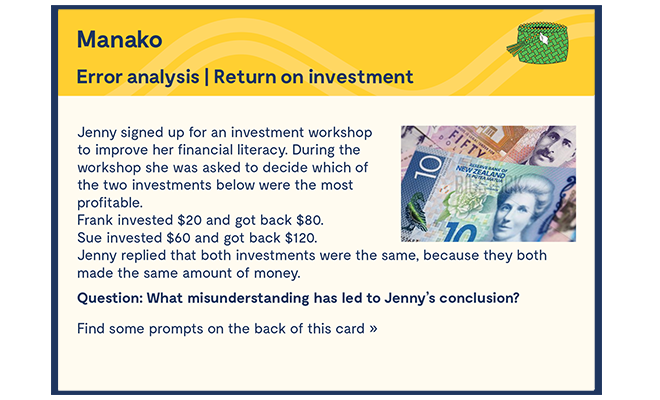Return on investment Step 3 | Research-based teaching and learning sequence
There are many excellent ways to help learners recognise multiplicative relationships. We will explore one that you can use with Jenny or a class of learners who have difficulty with multiplicative thinking.
Hand out a grid to the learners.
Print and cut out two connected squares.
Ask learners to shade in squares across the rows. Two squares in the first row, four in the third row, six in the fifth and, eight in the seventh row.
The video clips below demonstrate how to use the grid and double-square to develop multiplicative understanding.
https://www.youtube.com/watch?v=1yecF9hOndw
https://www.youtube.com/watch?v=UhXwkjga4Cg
As you can see, this activity takes no more than 15- 20 minutes and can be used to develop learners’ understanding of return on investment.
A follow-up activity is to ask learners to look at the following scenarios and work out the return on investment of each example. Note, only whole numbers are used at this point to help develop conceptual understanding.
- Sue invested $8 and made $16. Sue made ________ times as much as she invested.
- Gary invested $10 and made $20. Gary made ________ times as much as he invested.
- Sayle invested $100 and made $500. Sayle made __________ times as much as she invested.
Final tip
Here is a quick way that will also help you in your teaching of multiplication to adults. Change the language you use. Instead saying 2 times 4, show learners that they can change the term ‘times’ into the phrase ‘groups of’.
“2 times 3” becomes “2 groups of 3”.
“5 times 7” becomes “5 groups of 7”.
This simple change of language makes multiplication much easier to make sense of.
For example: Frank invested $20 and gained back $80. What rate of return did he get? How many groups of 20 fit into 80? 4 groups of 20 fit into 80, so 20 times 4 equals 80.
This means that Frank made 4 times as much as he invested.
This lesson leads well into teaching and learning percentages. For example, ‘2 times the return is a 200% increase’.

